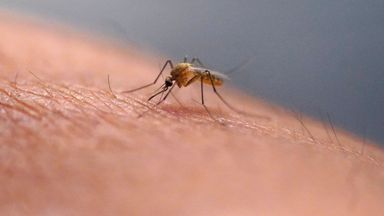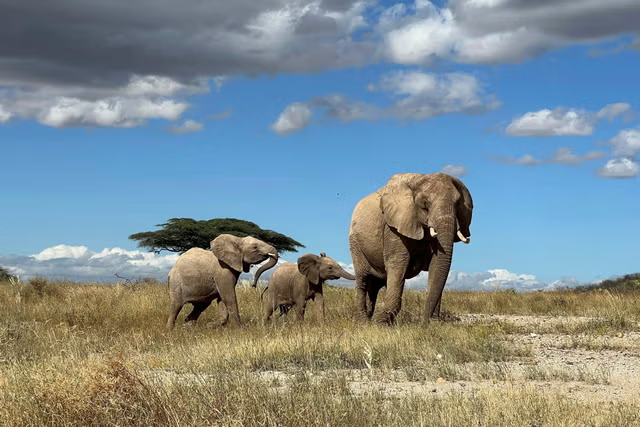Human-caused emissions of the potent but often-overlooked greenhouse gas nitrous oxide, or laughing gas, are rising sharply and increased 40 percent over the past 40 years, according to a comprehensive new study.
Researchers warn that nitrous oxide is accumulating in the atmosphere faster than many scientists had expected, making it harder to meet the emissions reductions targets needed to avoid the most catastrophic climate change effects.
"If we don't control these nitrous oxide emissions, that means you have to reduce the carbon dioxide even more," the report's lead author, Hanqin Tian, told Newsweek.
Tian is the Schiller Institute Professor of Global Sustainability at Boston College and he worked with a team of 58 researchers from 15 countries to produce the "Global Nitrous Oxide Budget 2024," published Wednesday in the quarterly journal Earth System Science Data.
Nitrous oxide, or N2O, is used for pain relief during dental and other medical procedures and in some industrial applications. But in the atmosphere, N2O is the third-most problematic greenhouse gas behind carbon dioxide and methane.
Tian said that while N2O volumes are far less than those of carbon dioxide, the best-known greenhouse gas, the heat-trapping capacity of N2O is about 300 times more powerful. The study found that the rate of increase in N2O emissions from 2020 to 2022 was higher than at any time in history.
"This greenhouse gas growth rate is far beyond the [Intergovernmental Panel on Climate Change] estimate," he said.
A major source of the problem has its origin, somewhat ironically, in one of the most beneficial scientific advances in the past century.
"Most of the gas is from nitrogen fertilizer," Tian said.
The development of chemical nitrogen fertilizer in the early 20th century kicked off the Green Revolution in agriculture, greatly increasing crop yields and helping to feed a burgeoning global population. But in the 21st century, we are reckoning with the costs of pouring all that excess nitrogen into the environment.
Relatively little of the nitrogen applied to farmlands is taken up by plants, leaving the rest to escape into the atmosphere as nitrous oxide, or to flow into rivers and lakes as nutrient pollution, causing harmful algae blooms in lakes and rivers and dead zones at river mouths.
Tian said that means that more efficient use of nitrogen fertilizer could address a range of environmental problems while cutting greenhouse gas emissions.
"There's a co-benefit," he said. "It would immediately benefit the water quality and improve air quality."
The study identified some areas of progress on nitrous oxide. The European Union, Japan and South Korea have reduced their emissions and China, the world's largest source, has started to reduce emissions in recent years since the country launched a program to cut the use of nitrogen fertilizer.
Tian said several major agricultural companies are working on ways to improve the application of nitrogen. One of those is BP Bunge Bioenergia in Brazil, a joint-stock company formed in 2019 by oil company BP and agricultural company Bunge.
Bunge, based in Missouri, appears on Newsweek's ranking of America's Greenest Companies, where it earned four-and-a-half out of five stars, and ranks 314th among the 600 entries on Newsweek's list of America's Most Responsible Companies.
BP Bunge operates in Brazil, which Tian's study found is the world's fourth-largest source of N2O emissions. The company grows sugarcane for ethanol and other energy products, as well as sugar.
The crop has traditionally relied heavily on nitrogen fertilizer, but executives said that a recent shift to more regenerative agricultural practices is changing that.
"We are seeing a revolution in this industry," BP Bunge CEO Geovane Consul told Newsweek.
Consul said that a switch to biological products in place of mineral additives enabled the company to cut its use of nitrogen fertilizer in half, reduce greenhouse gas emissions by a third and save money while doing it.
The company is using specialized bacteria that can be added to soil or applied to plants in order to help the plants better "fix" and take in nitrogen from the soil, reducing the need for fertilizer.
Back-to-back business threats inspired the company's move away from chemical fertilizer, Consul said.
"When the pandemic started, we had some disruption in the supply chain of chemical fertilizers across the globe," he explained. "And the second effect was the Ukraine war."
Russia's invasion of Ukraine caused natural gas prices to soar, and natural gas is crucial to the production of nitrogen fertilizer. BP Bunge turned to biological substitutes primarily out of economic need and discovered the ecological benefits made them a win-win.
More sustainable sugarcane production could have additional climate benefits as biofuels replace more uses of fossil fuels in transportation, Consul said.
Consul said other large-scale growers of soybean and corn are adopting similar practices and major agricultural supply companies are developing more biological substitutes for chemical fertilizer and pesticides.
"I think it's a very positive move, and more to come," he said.
Tian said that the data on nitrous oxide emissions underlines agriculture's importance to the climate crisis. Livestock, farmlands and the machinery supporting them produce massive amounts of emissions, but agriculture is also ripe with potential climate solutions.
"About one-third of our greenhouse gases comes from the food production system," Tian said. "So if we you don't solve this problem, it's never possible to solve the climate change problem."
Disclaimer: The copyright of this article belongs to the original author. Reposting this article is solely for the purpose of information dissemination and does not constitute any investment advice. If there is any infringement, please contact us immediately. We will make corrections or deletions as necessary. Thank you.



